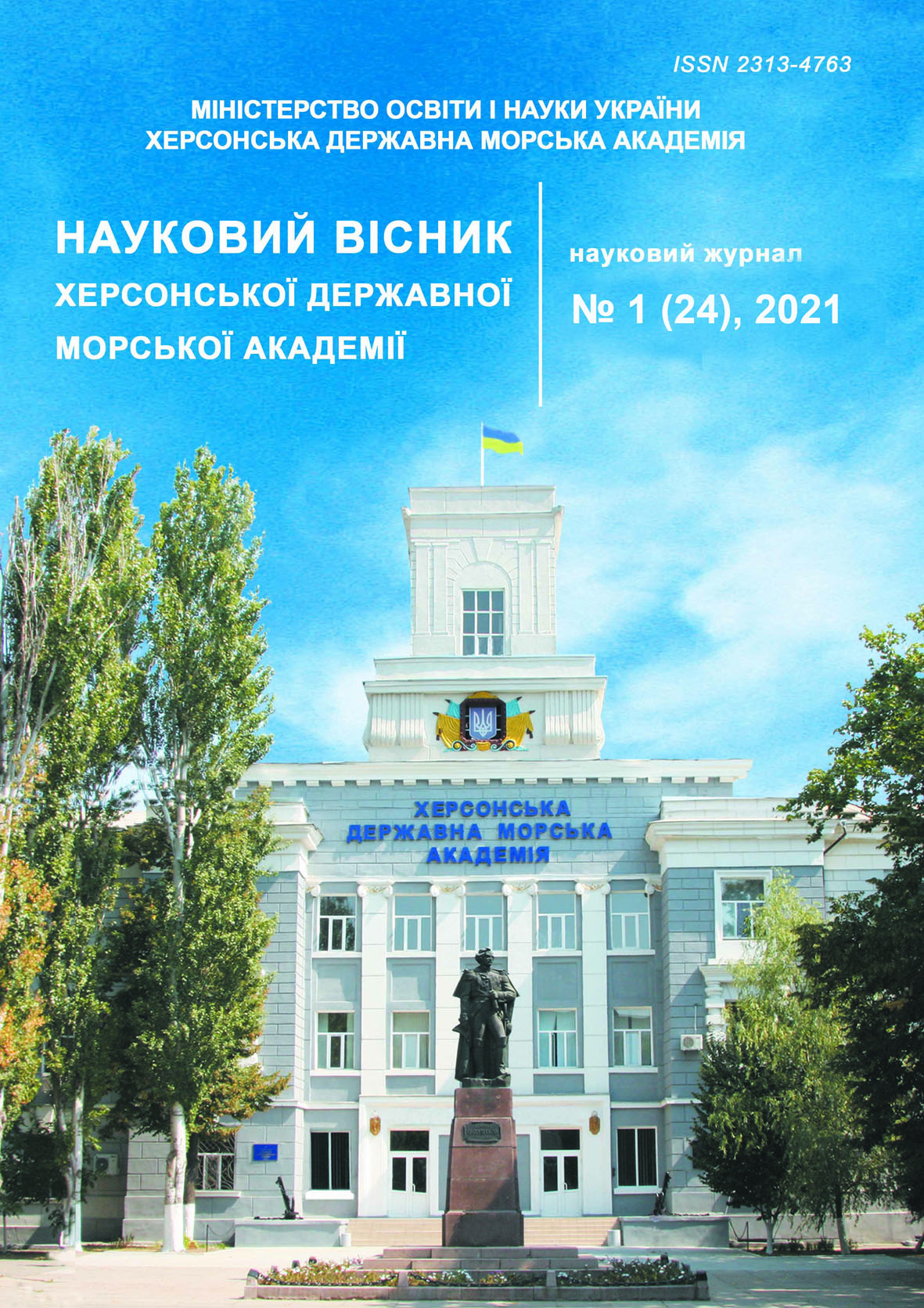AUTOMATIC CONTROL OF INDOOR AIR QUALITY AND COMFORT OF SHIP PREMISES
https://doi.org/10.33815/2313-4763.2021.1.24.006-018
Abstract
The study is targeted at developing the structure of automatic control system (ACS) for indoor air quality and comfort management. Automatic control problem has been formalized as a multi-criteria optimization. The modern methods of assessing the safety of the gas composition in the air have been analyzed. As follows from the analysis, it has been established, that the synthesis of automatic control system requires application of analytical safety indicators for accurate mathematical modeling of the ship premises microclimate. The requirements for the gas composition in the air have been formalized. The obtained analytical dependences have been included into the mathematical model of the room microclimate. An alternative approach for the air quality and comfort management has been developed. The article contains the design of the mathematical model of the ship premises microclimate considering
analytical functions for gas composition in the air and air quality. The structural scheme of the automatic control system has been proposed and the automatic control problem has been defined through the multicriteria optimization. The following areas for further research have been identified: verification of the model, particularization of the ACS structure and development of a control algorithm, creation of a prototype on a microprocessor elementary base. The obtained results of the research can be applied when modeling the dynamics of indicators of comfort and safety of room microclimate as well as when creating automatic control systems.
References
2. Pro skhvalennia Natsionalnoi transportnoi stratehii Ukrainy na period do 2030 roku : Rozporiadzhennia Kabinetu Ministriv Ukrainy vid 30.05.2018 r. № 430-r. Verkhovna rada Ukrainy. Zakonodavstvo Ukrainy : veb-sait. Retrived from https://zakon.rada.gov.ua/laws/show/430-2018-r.
3. DSP 7.7.4.-057-99 : Derzhavni sanitarni pravyla dlia morskykh suden Ukrainy : Derzhavna sanitarno-epidemiolohichna sluzhba Ukrainy, 1999. Verkhovna rada Ukrainy. Zakonodavstvo Ukrainy : veb-sait. Retrived from https://zakon.rada.gov.ua/rada/show/v0057488-00.
4. DSP 7.7.4.048-99-2000 : Derzhavni sanitarni pravyla dlia richkovykh suden Ukrainy: Derzhavna sanitarno-epidemiolohichna sluzhba Ukrainy, 2000 Verkhovna rada Ukrainy. Zakonodavstvo Ukrainy : veb-sait. Retrived from : https://zakon.rada.gov.ua/rada/show/va048282-99.
5. Pro zatverdzhennia pereliku profesiinykh zakhvoriuvan : Postanova Kabinetu Ministriv Ukrainy vid 08.11.2000 r. № 1662. Verkhovna rada Ukrainy. Zakonodavstvo Ukrainy :
veb-sait. Retrived from https://zakon.rada.gov.ua/laws/show/1662-2000-p.
6. He Zhang Ravi Srinivasan A Systematic Review of Air Quality Sensors, Guidelines, and Measurement Studies for Indoor Air Quality Management. MDPI, Sustainability Open Access Journal He Zhang & Ravi Srinivasan. October 2020. Vol. 12(21). P 1-38.
7. Regulation of Air Pollution: Australia. Library of congress LAW. Retrived from https://www.loc.gov/law/help/air-pollution/australia.php
8. Criteria Air Pollutants. United States Environmental Protection Agency. Retrived from https://www.epa.gov/criteria-air-pollutants
9. Limits for Air Contaminants. United States department of labort. Retrived from https://www.osha.gov/laws-regs/regulations/standardnumber/1910/1910.1000TABLEZ1
10. List of MAK and BAT Values. Maximum Concentrations and Biological Tolerance Values at the Workplace Permanent Senate Commission for the Investigation of Health Hazards of Chemical Compounds in the Work Area Retrived from https://onlinelibrary.wiley.com/doi/pdf/10.1002/9783527695539.oth1
11. India: air Quality Standards. Transport Policy.net. Retrived from https://www.transportpolicy.net/standard/india-air-quality-standards/
12. IAQ Management Act, Ministry of Environment. Korea Legislation Research Institute Retrived from https://elaw.klri.re.kr/eng_service/lawView.do?hseq=41231&lang=ENG
13. Canadian Ambient Air Quality Standards (CAAQS). Canada»s Air. Retrived from https://www.ccme.ca/en/air-quality-report
14. Air quality guidelines – global update 2005. Word Health Organization. Retrived from https://www.who.int/airpollution/publications/aqg2005/en/
15. The NIOSH Occupational Exposure Banding Process for Chemical Risk Management : National Institute for Occupational Safety and Health. Retrived from https://www.cdc.gov/niosh/docs/2019-132/pdfs/2019-132.pdf
16. ACGIH. TLVs and BEIs: Threshold Limit Values for Chemical Substances and Physical Agents and Biological Exposure Indices. In American Conference of Governmental Industrial Hygienists; ACGIH: Cincinnati, OH, USA, 2019
17. ANSI/ASHRAE Standard 62.1-2016, Ventilation for Acceptable Indoor Air Quality. Retrived from https://ashrae.iwrapper.com/ViewOnline/Standard_62.1-2016
18. Technical Assistance Document for the Reporting of Daily Air Quality – the Air Quality Index (AQI). EPA. Retrived from https://www3.epa.gov/airnow/aqi-technical-assistancedocument-sept2018.pdf
19. Bolton D. (1980). The Computation of Equivalent Potential Temperature. Journals Americal Meteorogical Society, Vol. 108, 1046–1053. DOI: https://doi.org/10.1175/1520-
0493(1980)108<1046:TCOEPT>2.0.CO;2
20. Golikov V. A. (2000). Povihshenie ehffektivnosti i optimizaciya rezhimov rabotih sistem sudovogo mikroklimata. Doctors Thesis. Mykolaiv.
21. Chihui Zhu & Nianping Li. (2017). Study on indoor air quality evaluation index based on comfort evaluation experiment. Procedia Engineering, Vol. 205, 2246–2253.
22. Khodarina K. V. (2013). Obespechenie komfortnihkh usloviyj mikroklimata obitaemihkh pometheniyj morskikh sudov. Candidates Thesis.






